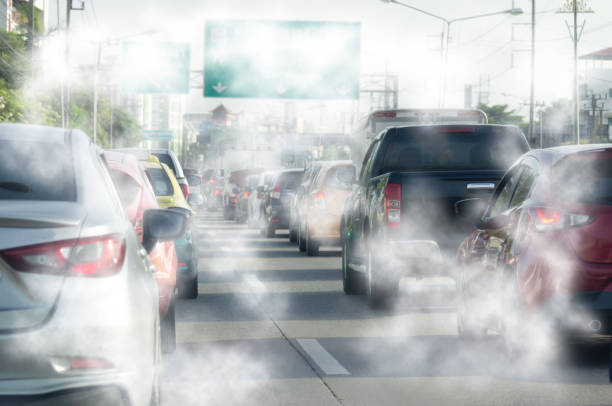Introduction:
Welcome to a journey of discovery, where we unravel the intricate impacts of car emissions on human health. While the automobile industry has brought us unparalleled convenience and freedom, it’s essential to understand the potential cost – car emissions. In this article, we delve into the fascinating world of car emissions and shed light on a crucial aspect of public health.
Understanding Car Emissions:
Car emissions, the by-products of fuel combustion in internal combustion engines, release a variety of gases and particles. These pollutants include carbon dioxide (CO2), carbon monoxide (CO), nitrogen oxides (NOx), volatile organic compounds (VOCs), and particulate matter (PM).
Types of Car Emissions:
Diving deeper, let’s explore the two primary types of car emissions: Tailpipe emissions and Evaporative emissions. Tailpipe emissions are expelled when vehicles run, while evaporative emissions result from fuel evaporation, even during vehicle inactivity.

The Link Between Car Emissions and Air Pollution:
The connection between car emissions and air pollution cannot be overlooked. These pollutants react with sunlight and other compounds to form harmful ground-level ozone and smog, posing serious environmental and health risks.
Car emissions contribute significantly to air pollution. Pollutants released by vehicles, such as carbon dioxide, carbon monoxide, nitrogen oxides, volatile organic compounds, and particulate matter, react with sunlight to form harmful ground-level ozone and smog.
Effects on Health and the Environment:
Ground-level ozone and smog can cause respiratory issues like throat irritation, coughing, and breathing difficulties. They worsen symptoms in individuals with asthma and chronic bronchitis. Additionally, these pollutants may impact cardiovascular health and harm the environment, affecting plant life and ecosystems.
Short-Term Effects: Car emissions can trigger respiratory issues, especially in susceptible individuals. Such effects may include asthma aggravation, airway irritation, and exacerbation of chronic bronchitis, leading to temporary breathing difficulties.
Long-Term Effects: Taking a broader perspective, long-term exposure to car emissions poses even more significant risks to respiratory health. Prolonged exposure is associated with an increased risk of developing chronic respiratory diseases, such as chronic obstructive pulmonary disease (COPD). Additionally, car emissions can impede lung development in children and accelerate lung function decline in adults, gradually reducing respiratory capacity over time.
Vulnerable Populations at Risk:
Vulnerable populations, such as children, the elderly, and individuals with pre-existing respiratory conditions, face heightened risks from car emissions.
- Children: Their developing lungs are more susceptible to air pollutants, increasing the risk of respiratory issues and long-term health impacts.
- Elderly: Aging can lead to compromised respiratory function, making them more vulnerable to the adverse effects of air pollution.
- Respiratory Conditions: Individuals with asthma, chronic bronchitis, or COPD may experience exacerbated symptoms when exposed to car emissions, leading to more frequent and severe health complications.
Protecting these vulnerable groups requires urgent action to reduce car emissions and create a healthier environment for everyone.
Mitigating Car Emissions’ Impact on Health:
Technological Advancements: Amidst this challenge, hope shines through technological advancements in eco-friendly vehicles. Hybrid and electric cars are leading the way, producing fewer emissions and positively impacting air quality.
Promoting Eco-Friendly Transportation: Each of us holds the power to make a difference. By choosing eco-friendly transportation options like public transportation, carpooling, cycling, and walking, we can collectively reduce the number of vehicles on the road and decrease overall car emissions.
The Importance of Environmental Policies: Government Regulations: Advocating for and implementing stringent emission standards and regulations can significantly curb car emissions and protect respiratory health.
Individual Responsibilities: Empowering individual responsibility, proper vehicle maintenance, public transportation usage, and eco-friendly driving habits all contribute to preserving air quality and safeguarding our health.
Conclusion: As we conclude this captivating exploration, remember that the impacts of car emissions on human respiratory health are both profound and actionable. By raising awareness and taking positive steps, we can pave the way towards a greener and healthier future. Let us join hands and drive forward with confidence, assured that together, we can create a cleaner and healthier environment for ourselves and generations to come.


